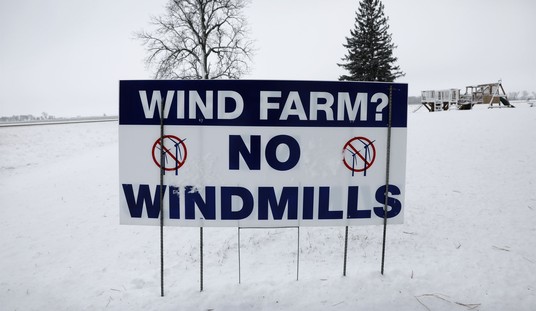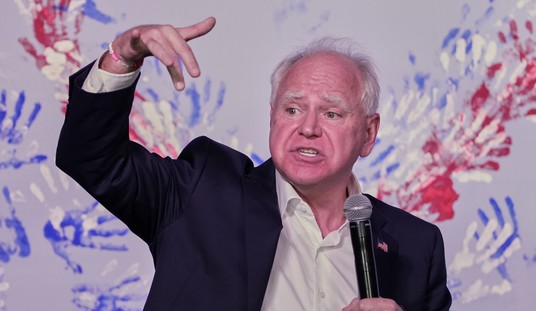The Obama administration’s new clemency efforts became official today, as the Department of Justice announced the start of their revamp of the petition process that could end up commuting thousands of sentences. Deputy Attorney General James Cole promised “an extensive screening system” to identify only those who have served significant time in federal prison for their offenses, have kept their noses clean (figuratively and literally), and whose convictions did not involve violence. The DoJ will offer pro bono legal services to those who qualify to navigate the clemency petition process as well:
We are launching this clemency initiative in order to quickly and effectively identify appropriate candidates, candidates who have a clean prison record, do not present a threat to public safety, and were sentenced under out-of-date laws that have since been changed, and are no longer seen as appropriate. While those sentenced prior to the Fair Sentencing Act may be the most obvious candidates, this initiative is not limited to crack offenders. Rather, the initiative is open to candidates who meet six criteria: they must be (1) inmates who are currently serving a federal sentence in prison and, by operation of law, likely would have received a substantially lower sentence if convicted of the same offense today; (2) are non-violent, low-level offenders without significant ties to large-scale criminal organizations, gangs, or cartels; (3) have served at least 10 years of their sentence; (4) do not have a significant criminal history; (5) have demonstrated good conduct in prison; and (6) have no history of violence prior to or during their current term of imprisonment.
Identifying worthy candidates within our large prison population will be no easy feat. A good number of inmates will not meet the six criteria. But we are dedicating significant time and resources to ensure that all potentially eligible petitions are reviewed and then processed quickly to ensure timely justice.
First, we have put in place an extensive screening mechanism. Next week, the Bureau of Prisons is notifying all federal inmates of our initiative and providing them with these six criteria. If an inmate believes he or she fits these six criteria, the Bureau of Prisons will provide them with an electronic survey to fill out that will allow Department lawyers to efficiently screen whether the petition merits further consideration.
Second, I am pleased to announce that all inmates who appear to meet these six criteria will be offered the assistance of an experienced pro bono attorney in preparing his or her application for clemency. In January, I gave a speech to the New York State Bar Association in which I called upon private attorneys to volunteer to assist potential candidates in assembling commutation petitions – ones which provide a focused presentation of the information the Department and the President will consider – in order to meaningfully evaluate whether a petitioner qualifies under this initiative. Since that time, dedicated and experienced criminal defense and nonprofit lawyers have responded to that call. These numerous groups and individual attorneys, who are calling themselves Clemency Project 2014, will be working with inmates who appear to meet the six criteria and request the assistance of a lawyer. I am very grateful for the work of these volunteers and am confident that their commitment and expertise will result in high-quality petitions that the Department of Justice will be able to process on a more efficient basis.
The criteria mentioned by Cole are published at DoJ as well:
- They are currently serving a federal sentence in prison and, by operation of law, likely would have received a substantially lower sentence if convicted of the same offense(s) today;
- They are non-violent, low-level offenders without significant ties to large scale criminal organizations, gangs or cartels;
- They have served at least 10 years of their prison sentence;
- They do not have a significant criminal history;
- They have demonstrated good conduct in prison; and
- They have no history of violence prior to or during their current term of imprisonment.
These seem like rational set of guidelines for clemency in general, and for this project in particular. The prerequisite of having to serve 10 years should mitigate the objection that this is letting people off scot-free for their crimes. The same is true for their good-behavior records, especially the “no violence” requirement for both their crimes and their incarceration. These criteria and the process announced also shows that this isn’t a “blanket” amnesty, but still a case-by-case review of clemency petitions that presidents have almost always used for this process. Only the focus and the criteria have changed, and the amount of resources applied to the effort.
By the way, while people recall that Jimmy Carter offered an unconditional blanket pardon to Vietnam War draft dodgers, they forget that Gerald Ford also offered a blanket conditional amnesty to the same group. Just a month after assuming office, Ford offered pardons through executive clemency in exchange for two years of public service. Both of those were more broad than what’s being proposed here, and didn’t include the kind of criteria announced by the DoJ today.
One objection that could arise is to what “significant” means in terms of criminal history or ties to crime syndicates, gangs, and cartels. The subjective nature of “significant” will generate plenty of cynicism, especially for an administration that routinely bends data and facts to the breaking point on other subjects and projects it want to promote. However, a balancing interest will be — at least for a short period of time, while Obama remains in office — the political damage that reoffenders will cause. They do have a rational incentive to avoid offering clemency to those, especially since even a rigorous application of these standards will likely produce a few thousand cases where clemency is appropriate.
Note too that these limitations are self-applied anyway. The clemency power of the executive is nearly absolute, which means that any administration can use whatever criteria it desires when offering pardons and commutations. The legislative and judicial branches have no say in this process; only the power of voters can check the executive over clemency actions. It’s why presidents have waited until after elections to issue more pardons; Bill Clinton issued over two hundred in his final month in office after barely using the power over the previous 95 months — most egregiously on behalf of a party crony. Article II, Section 2 of the Constitution only limits the power of clemency to federal crimes and only bars it from pardoning those impeached by Congress, emphasis mine:
The President shall be Commander in Chief of the Army and Navy of the United States, and of the Militia of the several States, when called into the actual Service of the United States; he may require the Opinion, in writing, of the principal Officer in each of the executive Departments, upon any subject relating to the Duties of their respective Offices, and he shall have Power to Grant Reprieves and Pardons for Offenses against the United States, except in Cases of Impeachment.
A President could, in fact, empty federal prisons through this power if he so chose, but he wouldn’t last long in office if he did. Congress would impeach a President who did that, as impeachment is a political act as well as a judicial act — but it wouldn’t reverse the clemency actions once issued.
This seems like a rational effort to give some people a chance to re-enter society after serving significant time and demonstrating their potential for rehabilitation. We should watch the White House’s execution of its project, but refrain from hysterics over it.








Join the conversation as a VIP Member